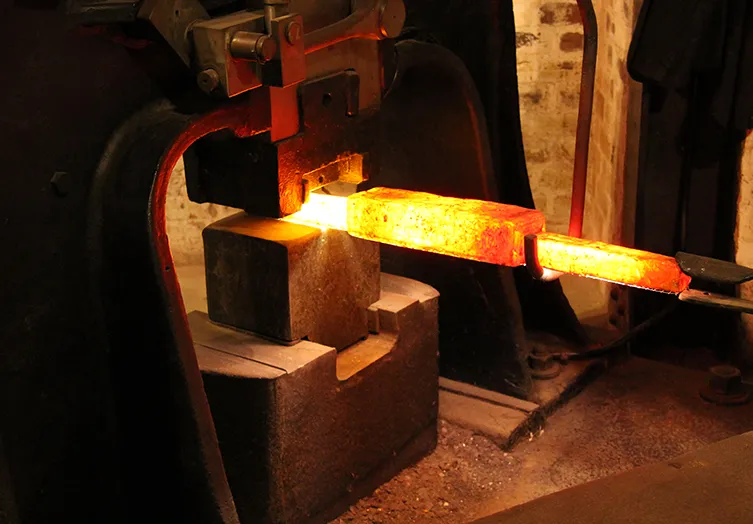


Casting is a manufacturing process in which a liquid material is poured into a mold containing a hollow cavity of the desired shape and then allowed to solidify. The solidified part is known as a casting, which is ejected or broken out of the mold to complete the process. This method is widely used for producing complex shapes that would be difficult or uneconomical to make by other methods.
Forging is a manufacturing process involving the shaping of metal using localized compressive forces. The blows are delivered with a hammer (often a power hammer) or a die. Forging is often classified according to the temperature at which it is performed: cold forging, warm forging, or hot forging. Forged parts are known for their superior mechanical properties and are typically used in high-stress applications.


Machining is a process in which a piece of raw material is cut into a desired final shape and size by a controlled material-removal process. The operations that have this common theme are collectively called subtractive manufacturing, in contrast to additive manufacturing. Machining is part of the manufacture of many metal products, but it can also be used on materials such as wood, plastic, ceramic, and composites.
Fabrication is the process of constructing products by combining typically standardized parts using one or more individual processes. Examples include cutting, bending, welding, forming, and assembling to create a final product. Fabrication is used for the production of complex assemblies and structures.


Injection molding is a manufacturing process for producing parts by injecting molten material into a mold. It can be performed with a host of materials mainly including metals (for which the process is called die-casting), glasses, elastomers, confections, and most commonly thermoplastic and thermosetting polymers. The material for the part is fed into a heated barrel, mixed, and forced into a mold cavity where it cools and hardens to the configuration of the cavity.
CNC (Computer Numerical Control) milling is a precise machining process that removes material from a workpiece using rotating multi-point cutting tools controlled by a computer. Starting from a CAD model, the CNC machine follows programmed instructions to shape the material, typically metals, plastics, or composites, into intricate and accurate parts. This process is essential for producing complex components in industries like aerospace, automotive, and medical devices, where precision and consistency are crucial.


Stamping is a high-speed manufacturing process used to shape flat sheet metal into specific forms through operations like punching, bending, and embossing. It involves using a stamping press where a die and tool exert pressure on the metal sheet, cutting or forming it into the desired shape. Stamping is ideal for mass production due to its efficiency and precision, making it widely used in automotive, electronics, and appliance manufacturing.